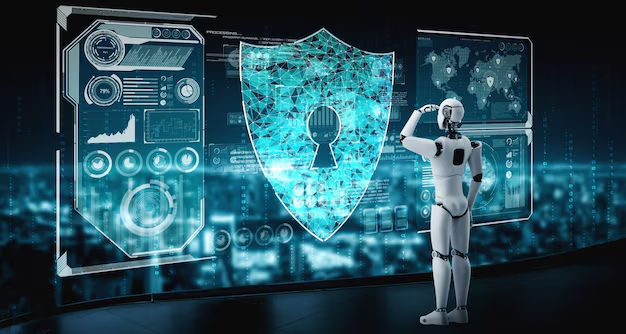In today’s rapidly evolving digital landscape, cybersecurity has become a top priority for businesses, governments, and individuals alike. As cyber threats become more sophisticated, ensuring the protection of sensitive information and systems is paramount. A robust defense strategy requires proactive measures, consistent monitoring, and a comprehensive approach to mitigate risks and ensure the integrity of digital assets. In this article, we will explore key strategies for building a strong cybersecurity defense.
1. Implementing Multi-Factor Authentication (MFA)
One of the most fundamental strategies to enhance security is the use of Multi-Factor Authentication (MFA). MFA adds an extra layer of protection by requiring users to verify their identity using multiple forms of authentication—such as something they know (password), something they have (a phone or hardware token), or something they are (biometric data). Even if a cybercriminal obtains a user’s password, MFA significantly reduces the chances of a breach.
2. Regular Software and System Updates
Cyber attackers often exploit vulnerabilities in outdated software and systems. Keeping all software, operating systems, and applications up to date is critical to patching security flaws. Automating updates and ensuring the timely installation of security patches can prevent cybercriminals from exploiting known vulnerabilities. It is also crucial to verify the authenticity of the software and updates to avoid installing malicious versions.
3. Employee Training and Awareness
Humans remain one of the weakest links in cybersecurity. Phishing attacks, social engineering, and other tactics often exploit unsuspecting employees to gain access to critical systems. To combat this, businesses must invest in regular cybersecurity training for all employees. Training should include recognizing phishing attempts, understanding the importance of strong passwords, and promoting safe browsing habits. The more educated employees are about potential threats, the less likely they are to fall victim to cyber-attacks.
4. Strong Password Policies
Password security is one of the cornerstones of cybersecurity. Ensuring that users employ strong, unique passwords for each system or account reduces the chances of unauthorized access. Enforcing password policies that require complex passwords (with a combination of uppercase, lowercase, numbers, and special characters) is essential. Additionally, using password managers to store credentials securely and regularly updating passwords is a good practice for maintaining security.
5. Implementing Network Segmentation
Network segmentation involves dividing a larger network into smaller, isolated segments. By segmenting critical systems from less sensitive areas, organizations can minimize the potential damage in case of a breach. For example, separating the internal network from the public-facing network limits an attacker’s ability to move laterally within the organization. Segmenting networks can also help to monitor and control traffic flow more efficiently.
6. Data Encryption
Data encryption ensures that information remains unreadable to unauthorized users, even if they manage to intercept it. Implementing encryption for sensitive data—both in transit (while moving across the network) and at rest (stored on servers or devices)—is a crucial step in securing digital assets. Whether it’s financial records, customer information, or internal communications, encryption protects confidentiality and mitigates the risks associated with data breaches.
7. Regular Security Audits and Vulnerability Assessments
Regular security audits and vulnerability assessments help identify potential weaknesses in an organization’s defenses. These evaluations should be comprehensive and ongoing, focusing on identifying flaws in both systems and processes. Penetration testing, where ethical hackers attempt to breach the system, can also provide valuable insights into the strengths and vulnerabilities of the infrastructure. Conducting these audits regularly allows organizations to address risks before they are exploited.
8. Incident Response Plan
No security system is foolproof. Despite best efforts, breaches may still occur. This is why having an incident response plan is critical. An incident response plan outlines the procedures to follow in the event of a cybersecurity attack. It should include identification, containment, eradication, recovery, and post-incident analysis. A well-prepared response team can limit the damage and quickly restore normal operations. Regularly testing and updating the incident response plan ensures it remains effective.
9. Backup and Disaster Recovery Planning
Regularly backing up data is one of the most effective ways to recover from cyber incidents like ransomware attacks. Backups should be performed on a consistent schedule and stored in multiple locations, such as cloud-based services and offline storage. A disaster recovery plan outlines the steps to restore critical systems and data quickly, minimizing downtime and ensuring business continuity in the event of an attack.
10. Threat Intelligence and Monitoring
Staying ahead of emerging threats is essential for maintaining a strong defense. Threat intelligence involves gathering, analyzing, and acting on information about potential threats in the environment. By integrating threat intelligence feeds into security systems, organizations can better predict, detect, and prevent cyber-attacks. Continuous monitoring of networks and systems is also necessary to identify and respond to suspicious activity in real-time.
Frequently Asked Questions (FAQs)
- What is the most important aspect of cybersecurity?
- The most important aspect is ensuring a layered defense strategy, including employee training, encryption, strong password policies, and multi-factor authentication.
- How often should cybersecurity training be conducted?
- Cybersecurity training should be conducted regularly—at least annually—and supplemented with periodic refresher courses to keep employees updated on new threats.
- What is a ransomware attack?
- A ransomware attack occurs when malicious software encrypts a victim’s data, and the attacker demands payment (usually in cryptocurrency) in exchange for the decryption key.
- How can I protect my personal information online?
- Use strong, unique passwords, enable multi-factor authentication, avoid clicking on suspicious links, and be cautious about sharing personal information.
- What is network segmentation, and why is it important?
- Network segmentation is the practice of dividing a network into smaller parts to limit the impact of security breaches and to control traffic flow more efficiently.
- What is the role of encryption in cybersecurity?
- Encryption ensures that sensitive data is unreadable to unauthorized individuals, protecting the integrity and confidentiality of information.
- How do I know if my system has been compromised?
- Indicators of compromise include unusual system behavior, unexpected network traffic, or reports from security tools and monitoring systems. Regular audits can also help identify breaches.
Conclusion
Building a strong defense against cyber threats is essential for protecting sensitive information, maintaining business operations, and ensuring public trust. By adopting a multi-layered approach—incorporating strategies such as multi-factor authentication, employee training, encryption, and incident response planning—organizations can significantly reduce their risk exposure. Cybersecurity is an ongoing process, and constant vigilance is necessary to stay ahead of evolving threats.
Key Takeaways
- Cybersecurity requires a multi-faceted approach, combining technical solutions with user education.
- Regular software updates, strong password policies, and network segmentation are key to minimizing vulnerabilities.
- An effective incident response plan and robust backup strategies are essential for business continuity.
- Ongoing monitoring and threat intelligence help identify emerging risks and improve overall security posture.

